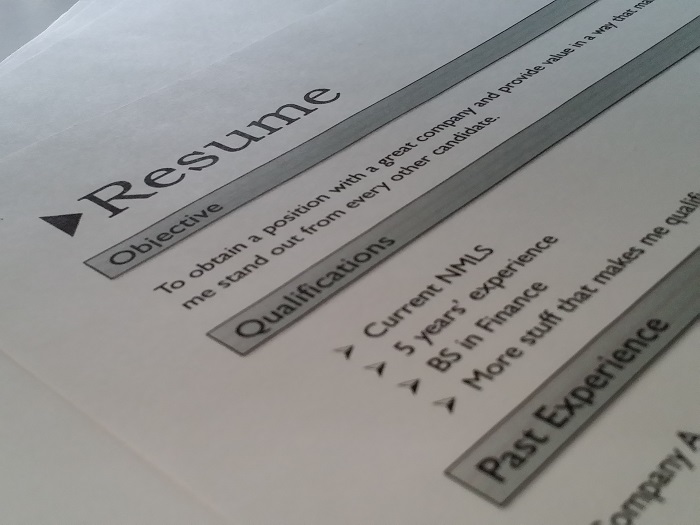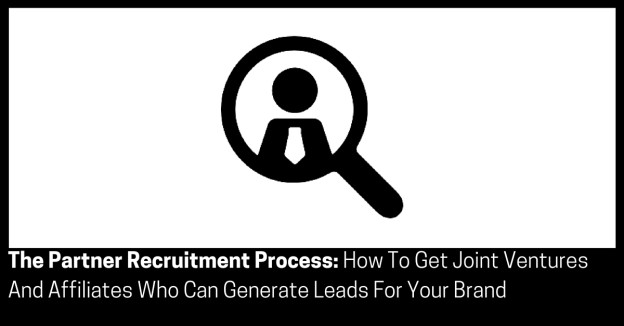Approximate read time: 18 minutes
Here are three vital marketing questions for you:
- Do you want to generate more leads?;
- Do you want to generate more targeted and qualified leads?; and
- Do you want to generate cheaper yet more targeting and qualified leads?.
Most people say yes to all three.
Of course, they would – it’s human nature.
And I’m assuming you said the same.
I’m going to show you how powerful saying yes can be…
In 2012, I brought an event called Startup Weekend to Adelaide.
Startup Weekend is a 54-hour weekend event that groups of developers, business managers, startup enthusiasts, marketing gurus, graphic artists and more pitch ideas for new startup companies, form teams around those ideas, and work to develop a working prototype, demo, or presentation by Sunday evening, having started on Friday evening.
At the time I had:
- Zero startup industry contacts;
- Zero startup industry credibility; and
- Zero startup industry influence.
Based on this, someone challenged me to a bet that I wouldn’t be able to get more than 20 people in the room.
$100 was on the line.
That event sold out at the capacity of 80 people.
And every event since then (five in total) have done the same.
How did this happen?
As the saying goes, “The first time you are lucky, but second time you are good.”
The answer is partnerships.
And by the way, they still have not come good on their bet 🙂
If it’s not clear already, partnerships are an important way to generate leads and sales.
This guide will show you how to recruit partners so that you can generate cheaper yet more targeting and qualified leads from them.
Here are some of the partner lead generation campaigns you can use:
- Reciprocal cross-promotion, including;
- Co-Enrolment;
- Co-Branding;
- Contests; and
- Giveaways;
- One way promotions (from them to you and from you to them), including;
- Product, service or solution launches;
- Affiliate promotion;
- Website awards and trust insignia;
- Communication promotion; and
- Touch point promotion.
Leads generated through these campaigns can then be used for:
- New product, service or solution launches;
- Existing and ongoing product, service and solution sales; and
- Sponsorships.
- To name a select few…
These all start with the Partner Recruitment Process.
Before we move on, let’s define some terms.
A partnership or joint venture is where two or more parties take part in an undertaking, association or arrangement to work together to share risk and profit.
A partnership or joint venture, in marketing, amongst other things, is about working together to promote each other’s products, services or solutions for increased mutual profit and reduced risk.
An Affiliate or sub-promoter is a party that is officially attached to a vendor.
An Affiliate or sub-promoter, in marketing, is a form a marketing in which the affiliate gets paid for making referrals, leads or sales for a vendor’s product, service or solution.
A Vendor, merchant, retailer, advertiser or seller is a provider that offers products, services or solutions for sale.
In combination, they could be referred to as “Symbiotic Marketing”.
“Symbiotic Marketing” is a marketing strategy where two or more complimentary but non-competing brands combine their marketing effort to generate leads and sales for all parties involved.
In other words, they cooperate with their marketing efforts of one another to get greater reach, awareness, conversion and return on investment.
This could be anything from co-branded advertisements to product, service or solution scavenger hunts and everything in between.
You may be wondering why brands would do this: “Aren’t they competing against each other?”
The answer is no.
Customers with the same pains or same wanted gains, actually buy more than one product, service or solution (even competing products, services or solutions) to bring them closer to that gain or away from that pain.
Customers were going to buy those products, services and solutions anyway, with or without prompting from symbiotic marketing.
How many books of the same genre do you own?
I’m willing to guess that it’s more than one.
Another example may be hair shampoo and conditioner.
A better example may be hair shampoo and a hair straightener.
In the latter example, the products, services or solutions are either upstream or downstream from each other.
Upstream is better than downstream because your products, services and solutions are the next logical progression for the customer that has purchased a competing product, service or solution.
Products, services or solutions that are alternative or competing can also be complimentary to your product, service or solution in the case of hair shampoo and conditioner.
Embracing this dynamic puts you in a position of leverage, as partners invest money, time and effort in generating leads, and both partners leverage each other’s investment.
Put this way, if a partner has a qualified contact list that has purchased $1,000,000 of products, service or solution and you can leverage this to build your contact list, you have in effect got access to $1,000,000 of qualified customers.
Pretty powerful.
So, what are the steps for recruiting partners?
Here they are:
- STEP 1: Partner Identification;
- STEP 2: Suspect For Partners;
- STEP 3: Find Contact Information;
- STEP 4: Partner Preparation;
- STEP 5: Initiating Outreach;
- STEP 6: Partner Recruitment; and
- STEP 7: Partner On-boarding.
Let’s begin with…

1) Partner Identification
Step one is about your ideal partners.
The more time you spend on this step, the better your partner recruitment will be.
Identify reputable competitors or complimentary vendors in your market who:
- Have related products, services and solutions, preferably “upstream” from your offer;
- Have a prospect and customer contact database (could be email, phone or social media); and
- Gives away free content to this contact database.
Without these criteria, they won’t be useful promotional partners.
Next, find their:
- Website URL;
- Decision maker’s name; and
- Decision maker’s contact email (better still, a snail mail postal address).
Then, prioritize your list into a contact order by (in order of importance).
- If you know the decision maker already;
- If you have built goodwill with the decision maker already;
- If you have an incentive you can offer this decision maker to partner with you; and
- If you have you know your Earnings-Per-Click (EPC) conversion rates.
Without these, recruiting partners are going to be hard, and you should drop everything right now and start establishing these.
It is worth noting that the geographic area you service and the industry or vertical your ideal customer is in has an influence on how many partners you can recruit.
If your brand has few competitors and services global customers, you’ll be able to generate far more partners than if your brand has a lot of competitors and services a small geographic niche.
That’s a given.
This is because your potential customers are getting far more pitches in the latter example.
Of course, the exact details of how to do this are beyond the scope of this guide.
This leads us to suspect for partners…

2) Suspect For Partners
…Step Two is about suspecting for partners.
After you have defined your ideal partners, you need a list of prospects.
A list of prospects could be built, rented or bought.
The last two can be quite expensive.
Purchased lists can also be outdated.
This leaves us with the former – building a customized updated prospect list that has the ability to give you permission for follow-up and reflects your ideal customer.
So, you need to create a large, unfiltered list of your ideal customers.
The more the better.
This can be a very time consuming task, as you can imagine.
The best place to start is building using Microsoft’s Excel spreadsheets combined with Google searching.
Of course, the exact details of how to do this are beyond the scope of this guide.
Use your ideal partner’s segmentation information and the geographic area you service to find relevant companies.
Better still is if you know the company names already of those that are a good fit.
This will save you a lot of time.
So how do you find potential partners?
They could be:
- Current prospects;
- Current customers;
- Friends;
- Referrals;
- Business associates;
- Social media followers;
- Networking contacts;
- Competitors;
- Competitors partners
- Industry influencers;
- Advertisers; and
- LinkedIn;
- To name a select few…
Of course, the exact details of how to do this are beyond the scope of this guide.
This leads us to find contact information…

3) Find Contact Information
…Step Three is about finding contact information.
Once you have a large list of your ideal partners, you need to find email addresses or contact information.
How do you find the contact information for the owner of a website?
The way to do this is to copy and paste the companies’ web URL into a browser, and navigate to their contact page or the:
- Terms of Service page;
- Privacy Policy page;
- Social media profiles;
- WHOIS information; or
- Just ask them…
By the way, I have systems and processes that streamline Steps 2 and 3.
Of course, the exact details of how to do this are beyond the scope of this guide.
This leads us to partner preparation…

4) Partner Preparation
…Step Four is about partner preparation.
Once you have found the contact information of the decision maker, you then need to decide on the following, depending on how you want to engage them:
- The opt-in message for partners prospects;
- The message types you want to display to partners prospects;
- The message distribution locations;
- Your partnership request and offer; and
- The partnership incentives.
Let’s tackle opt-in messages first for partner’s prospects…
This is usually a gated offer.
A gated offer is a free offer that has a “gate”, or entrance, attached to it.
In order to get the free offer, you must pass the entrance.
The cost of passing through the entrance is the prospects contact information, usually in the form of an email address, but it could be a phone number, too.
Partners will send you traffic, and you will try to capture their contact details in exchange for an incentive, or gated offer.
The promotional message type’s partners will display on your behalf to their contact database prospects could be:
- Graphic or link based advertisement; or
- Electronic communication.
These message types could be distributed and integrated at any contact or communication point with prospects and customers, such as (listed in priority order):
- Any fulfilment step;
- The opt-in fulfilment step;
- Any communication;
- Any sales step; and
- The pre opt-in step (welcome page).
The first two being the most powerful, as leads are already qualified and segmented by the partner.
Fulfilment steps occur right after a prospects opts-in or a customer purchases.
The sales steps and pre opt-in steps occur right before a prospects opts-in or a customer purchases, thus unqualified and unsegmented.
Any communication contact or communication point that has a higher degree of trust and permission from the sender is harder to secure such as email communication.
The following types outline possible partnership requests (listed in priority order):
- Reciprocal cross promotional message swap;
- One way promotional message – from them to you; and
- One way promotional message – from you to them.
Finally, let’s talk about incentives…
Law 13 in Robert Greene’s book The 48 Laws of Power states, “When asking for help appeal to people’s self-interest never to their mercy or gratitude.”
Determine what the partner may be interested in.
Obviously, this is done through market research, but from my experience, it could be financial or an in-kind incentive.
Reciprocal promotional message swaps are mutually beneficial, and no extra incentive is needed.
For one-way promotional message, from them to you, you need to need to pay them, usually in the form of commission or prizes for reaching certain thresholds.
Commission rates can vary from 25% to 100% for digital products, services or solutions and 1% – 25% for physical products, services or solutions.
The higher percentages are if it’s a self-paying offer.
Commissions can be structured as follows:
- PPS (Pay Per Sale) – this means payment is made for a sale;
- CPA (Cost Per action/Acquisition) – this means payment is made for referred leads;
- CPC (Cost Per Click) – this means payment is made each click;
- CPM (Cost Per 1,000 Impressions) – this means payment is made for every 1,000 views; and
- Revenue share – this means a share of the total sales volume for a time period.
Cash is king, but so are money-can’t-buy things and experiences, so think about a combination of both.
You could also provide bonuses or free gifts to their contact database that help their prospects.
For one way promotional message, from you to them, no incentive is needed.
You would provide your partners leads for free to build goodwill with them so they are more likely to help you later, say with a product, service or solution launch, or reciprocal promotion.
Remember that you should be getting to know partners and building goodwill before you make a request.
Calculate these incentives and build them into your business model.
These incentives and partner requests make up the offer you will pitch to partners.
It’s worth noting that with recruiting partners, no partner wants to be your first.
They want to see that other partners have de-risked you and your offer, before they do.
This means you should not try and recruit “A” tier partners in the first instance.
An “A” tier partner is any partner you think could market and sell your products, services and solutions better than any other due to their market credibility or reach and so on.
The best method for recruiting “A” tier partners is what I called “Leveraging Up.”
Leveraging Up is where you start recruiting lower tier partners (that is any partner you think could market and sell your products, services and solutions regardless of their market credibility or reach) to build a foundation and partner “portfolio”.
Once you have this foundation and partner “portfolio” in place, then you can begin to recruit “A” tier partners.
So to begin with, start recruiting “Z” tier partners.
These could be friends or people who know, like and trust you already.
You don’t need to use these as partners in the long term, but they do provide social proof that you can leverage up to higher partners.
Once “Z” tier partners are recruited, then move on to recruit “Y” tier partners, then again when they are recruited, use that social proof to recruit “X” tier partners (and so on) all the way up to recruiting “A” tier partners.
By the time you get to “A” tier partners, they are more likely to say yes to your partnership offer as many other partners have said yes to your partnership offer first.
The fact that they are lower tier partner, in most instances, does not matter to the higher tier partners.
This is why this method is given the name of “Leveraging Up.”
Of course, the exact details of how to do this are beyond the scope of this guide.
Finally, create the incentives, ready to initiate outreach…

5) Initiating Outreach
…The next step is initiating outreach.
The first step is to make contact with the purpose of building goodwill.
This is about building goodwill with the partner to use later, say for a product, service or solution launch, reciprocal promotion or a one-way promotion (from them to you).
At this step, you will do a one-way promotion (from you to them), with no expectation of reciprocation from the partner (in the first instance).
Specifically, you will promote them through your brand’s marketing channels. Then you will contact the partner and tell you have promoted for them with an expectation of reciprocation.
In some cases, you may need to request promotional swipe, dates and instructions.
Marketing swipe or swipe file is actual a collection of tested and proven promotion.
They act as templates where you literally can swipe, or “steal,” or copy and paste saving you time.
Particulars and word-for-word scripts, of course, are outside the scope of this guide.
Contact is best done in the following priority order (Remember from Step 1):
- In person;
- Snail mail;
- Phone; then finally
- Email.
Most people stick to email because practically it’s the only option.
So it’s best to touch on cold email best practice.
In the process, it is likely that you will get hard bounces, so don’t upload them to an automated email marketing platform.
You could get banned for spam.
You have been warned!
I have seen this multiple times.
The wording of your email is crucial, and good copywriting is a fine art and worth its weight in gold.
Gary Halbert and Joseph Sugarman are great copywriters to learn from as a start.
Whatever you do, don’t write your emails in “corporate speak.”
Write them like you were writing to a friend.
This also helps with spam compliance.
I’ll get to that shortly…
Make sure your emails are text based and short.
HTML emails look corporate and appear like you are selling something.
Emails should be easy to read on smartphones, show your credibility and have a single call to action.
Send communication before 9 and after 5, and avoid Monday or Fridays.
These times are particularly busy for business inboxes.
Send no more than 100 emails a day so that you do not overwhelm your team.
If you get an “Out of Office” autoresponder, you may be offered an alternative email address to reach your ideal customer.
Log all responses.
Of course, the exact details of how to do this are beyond the scope of this guide.
I don’t publish scripts for this because it won’t reflect your business’s voice, and scripts can become overused, and thus ineffective, if a lot of people are contacting the same companies with the same scripts.
It looks too canned.
This step involves broadly qualifying the decision maker as a potential partner.
This is not a sales communication.
Let me repeat!
This is not a sales communication.
That is spam.
This is about them, not you.
You want them to “raise their hand” and tell you they’re interested in partnering.
In this communication, you are looking for a high level fit.
Ask them if they have a traffic need and if they want to solve it.
Or any other qualifying characteristic…
Of course, the exact details of how to do this are beyond the scope of this guide.
You should be aiming for a 10% response rate (my average response rate is 32%).
If they reply that they are not interested, explain that they will not hear from you again.
If they reply that they are may be interested but not now, ask for permission to ask again in one month.
If they don’t reply, follow up with them in a week asking if they had time to consider your email, as it could have gotten lost.
You don’t want to harass them if they are not a decision maker or don’t have a need.
So let’s talk about the elephant in the building:
Spam.
You can read the Spam Act 2003 here: http://www.comlaw.gov.au/Series/C2004A01214.
NOTE: What follows is not legal advice.
In essence, you need:
- Gained consent for commercial communication;
- Clear identification of who sent the communication; and
- The ability to stop any further the communication.
Here are some guidelines that may help you comply:
- All links, phone numbers or contact information in the message should be intended to identify you by being placed in the signature and do not lead to content with a commercial purpose;
- Only find email addresses that are publicly published. Don’t guess email addresses or harvest them. Don’t contact emails that say they don’t want to be contacted publicly;
- Publish your business name, address, website, phone number and email in the email signature for the sole purpose of identifying the sender of the message, and make sure they do not lead to content with a commercial purpose. Staff should use their name both in the body and field;
- Your email address should stay active for 30 days after ceasing contact;
- Have unsubscribed information in the P.S. of email. Do this because the P.S. section is the one of the most read parts of an email;
- Remove unsubscribes immediately; and
- Unsubscribing need to be free for the recipient.
Your electronic communication is about contacting the decision maker with free value to open up a conversation and relationship with them, and offering to compensate them, not advertising a product, service or solution for sale.
Of course, the exact details of how to do this are beyond the scope of this guide.
This leads us to partner recruitment…

6) Partner Recruitment
…With contact made and goodwill built with the partners, you then want to recruit the same partners with your request for a:
- Reciprocal cross promotional message swap; or
- One way promotional message, from them to you.
This recruitment communication should also cover the following:
- Their incentive;
- Campaign date;
- Campaign instructions and how it works;
- Stats including EPC;
- Your product, service or solution and name;
- The benefits of your product, service or solution, what it does and what they get;
- Who your product, service or solution is for and not for;
- What this partnership a good opportunity for them;
- What you will do in the campaign (including full management); and
- Any associated costs.
Particulars and word-for-word scripts are outside the scope of this guide.
This step is usually done by a Partnership Broker.
Of course, the exact details of how to do this are beyond the scope of this guide.
This leads us to partner on-boarding…

7) Partner On-boarding
…Step Seven is about partner on-boarding.
Once partners agree to promote in a joint venture or as an affiliate, it’s time to sign them up.
NOTE: This not legal advice, but formal contracts are generally not needed, as most of the terms and conditions are covered by Steps 6 and 7 communication.
Set up partners by including tools that make their job easy:
- Distribute vital partner information;
- Distribute sales communication sequence and swipe (email, banners, ads, posts, tweets, and social media posts);
- Other resources and information; and
- Next actions.
Do this with a “Get Started” email, and have each partner on a communication database, where they do not get any general promotion communication intended for prospects and customers.
Particulars and word-for-word scripts are, of course, outside the scope of this guide.
This step is usually done by an Affiliate Manager.
Consider hiring an affiliate manager with the following qualifications:
- Track record success;
- Clear communication;
- Knowledgeable of internet traffic; and
- Proficient web coding skills.
Of course, the exact details of how to do this are beyond the scope of this guide.

Take Action
You made it…
You now have a solid plan for recruiting partners to create joint ventures and affiliates deals that will generate you leads.
That’s the full Partner Recruitment Process, and it will be more than enough for you to get started on your own.
You can get the printed illustrated Process Map of this and 20 others for free, here
And if you’re serious about marketing and selling more, the logical next step is to contact me to help you do it yourself, have me do it with you, or have it all done for you.
This maybe the momentum you need to get great marketing and sales results.
Now let’s learn about The Partner Co-Enrolment Process.
Or do you simply want more like this?
Join below to be notified immediately about new content and more. No annoying daily emails and no spam – just good content when it’s posted.

